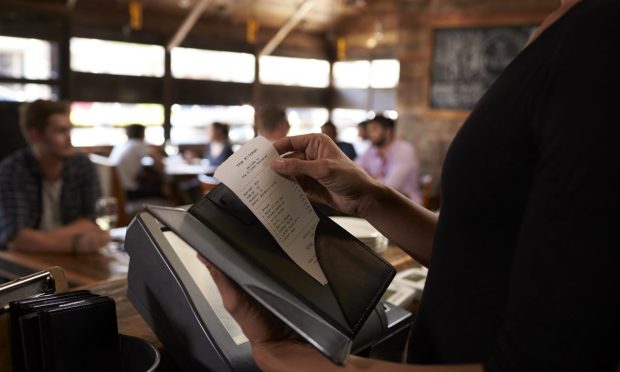Card-on-File Payments Boost Diner Spending, Restaurant Performance

Restaurants can boost consumers’ spending by saving payment information, according to data from PYMNTS’ Restaurant Friction Index, created collaboration with Paytronix.
The study, which drew from the results of a survey of a census-balanced panel of over 2,100 United States adults, more than 1 in 4 restaurant customers say that they would be more inclined to shop with restaurants that offer the ability to pay with a card on file than with those that do not.
Related news: New Data Show Digital Loyalty Programs Are Key Differentiator For Top-Performing Restaurants
The option, which removes friction from the payment process for returning customers, ranked ahead of a range of other popular digital features as an offering that would drive purchases. For instance, more consumers said they would be motivated by card-on-file payment capabilities than by contactless credit card in-store payment capabilities, by self-service kiosks, by digital wallet payments or by QR code payments.
About half of all restaurants currently offer this capability. Specifically, 47% of restaurants with table service and 53% of quick-service restaurants (QSRs) offer the ability to pay with a card on file, the Index’s survey of more than 500 restaurant managers found. Moreover, the study found that 39% of restaurants plan to invest in offering the ability to pay with a card on file.
Sure enough, the data reveal that restaurants that offer the feature perform better. Findings from the December 2020 Restaurant Readiness Index, also created in collaboration with Paytronix, which drew from a survey of 490 restaurant operators, show that top-performing restaurants are three times as likely as middle performers and five times as likely as bottom performers to offer the ability to pay with a card on file. The study found that 31% of top performers, compared to just 10% of middle performers and 6% of bottom performers, offer the feature.
See also: Study: The 12 Features That Have Helped Restaurants Make 2020’s Digital Shift — And Drive Sales
Restaurants have had the option to offer this feature for quite some time. For instance, back in 2016, payments platform Square launched its Card on File capability. In 2015, dining concierge app Reserve, which was later acquired by Resy, touted its own card-on-file features.
Read more: Square Launches “Card On File” Payments For In Store Purchases
Reserve — The M-Payments Dining App — Breezes Into The Windy City
Now, card-on-file payments are getting an update for the 2020s. In late February, New York City-based B2B Software-as-a-Service (SaaS) restaurant technology company Olo announced the general availability of Olo Pay, intending to make consumers’ saved payment credentials accessible for use at any restaurant on the payment solution’s network.
“Consumers aren’t just constrained to food ordering for eCommerce. They’re also using platforms like Shop Pay. They’re also using Amazon.com. They’re used to having frictionless payment experiences,” Olo CEO Noah Glass said in an interview with PYMNTS. “The status quo for ordering from restaurant brands’ sites, where the digital order provider is a gateway into a credit card processor really meant for in-restaurant card swipes that doesn’t have to operate in a consumer-facing layer … that’s no longer a good enough solution.”
You may also like: Olo CEO: Removing Payment Friction Equips Restaurants to Compete With Aggregators
